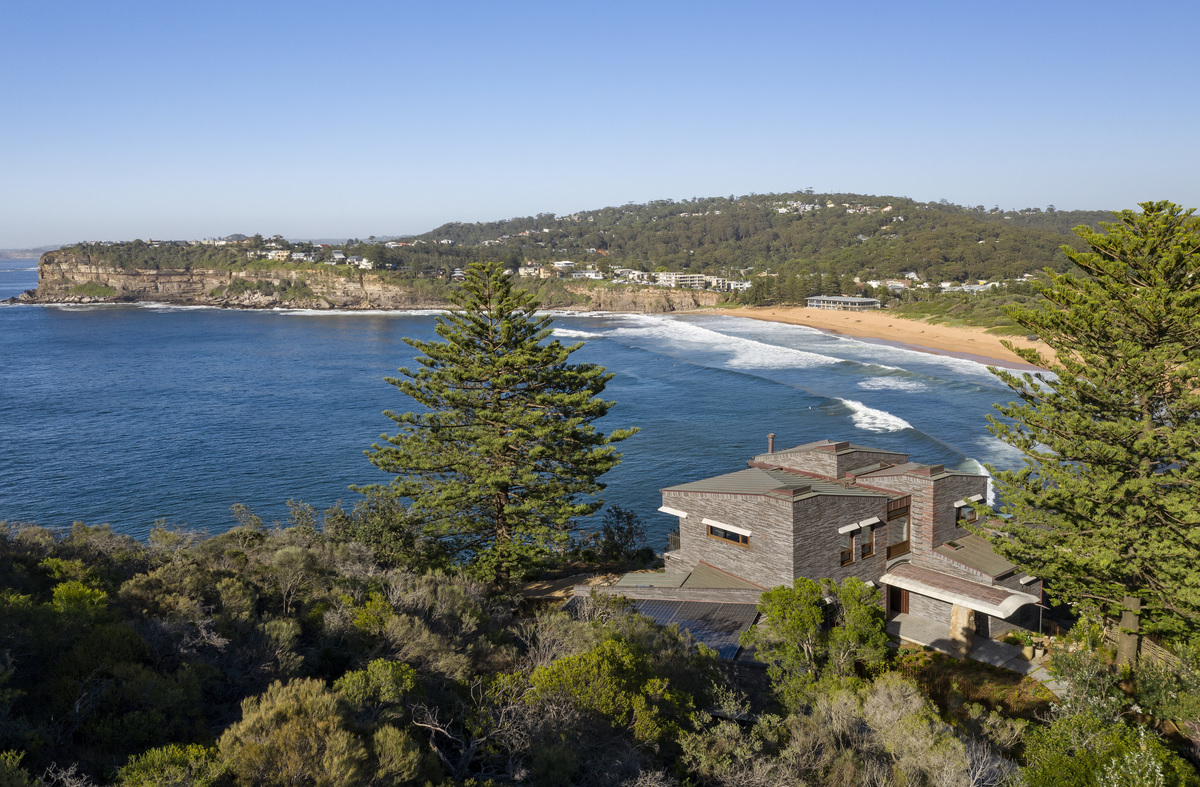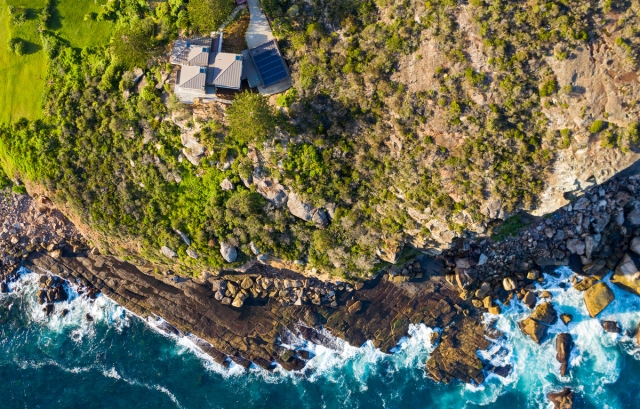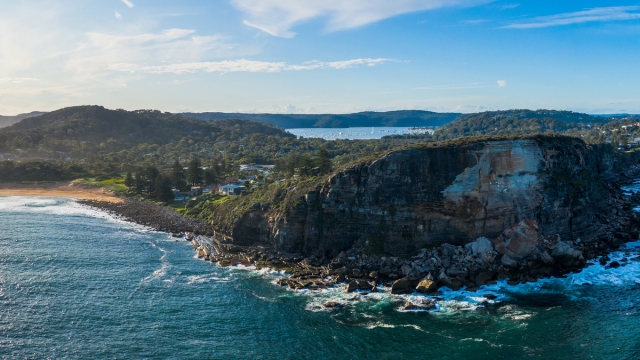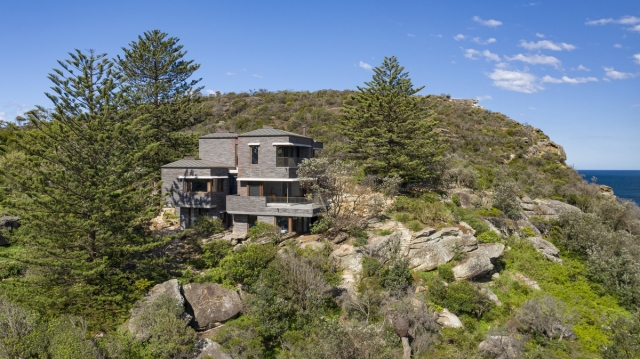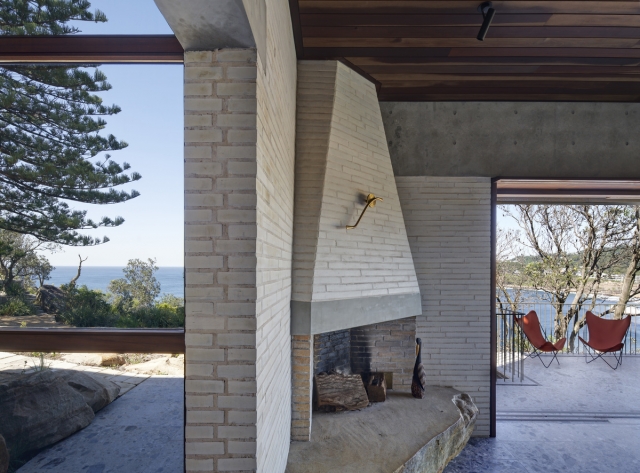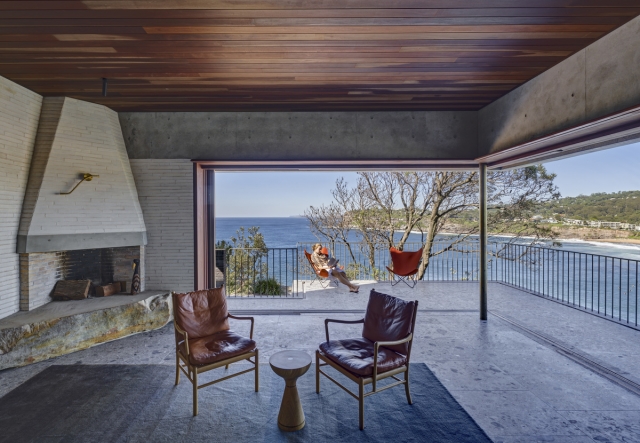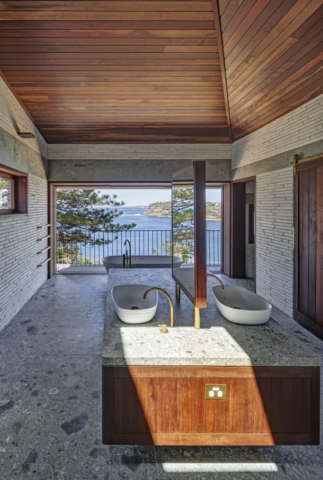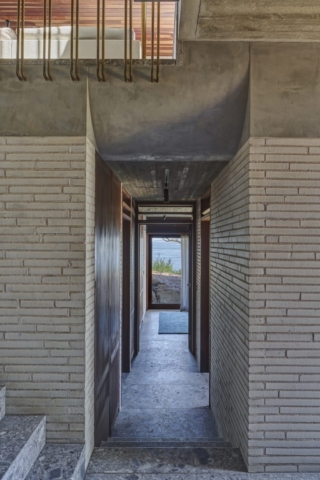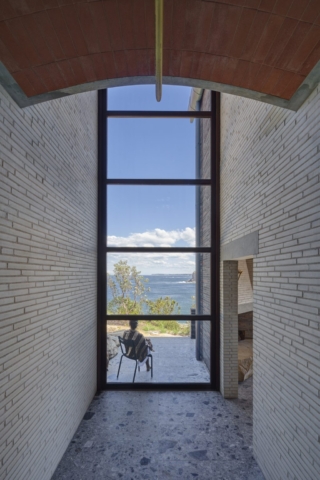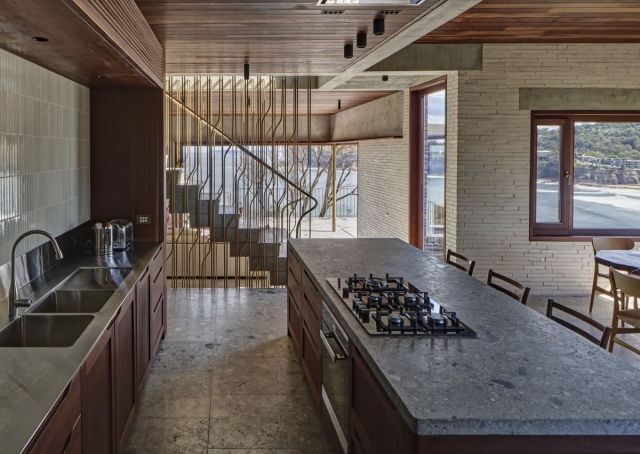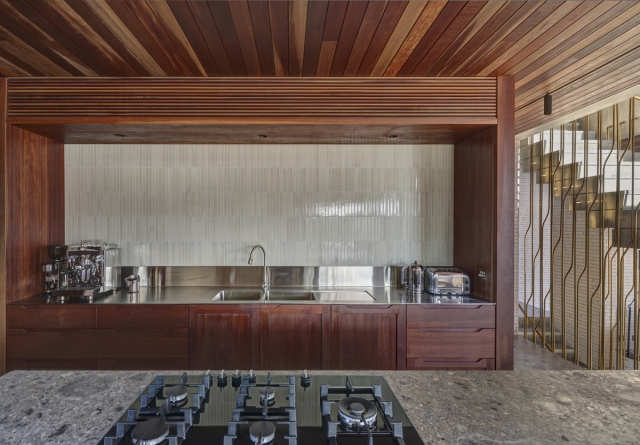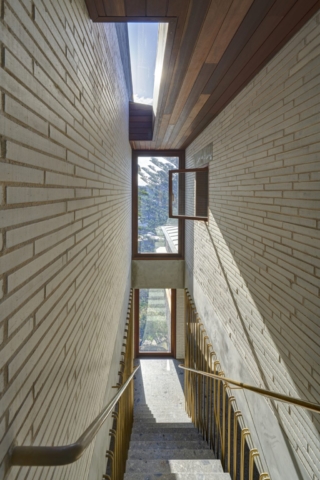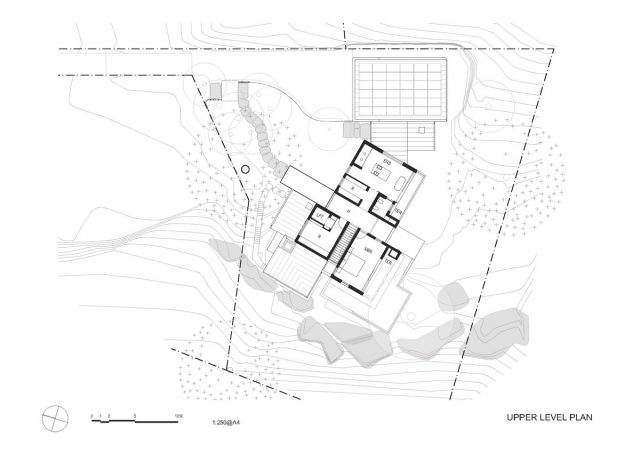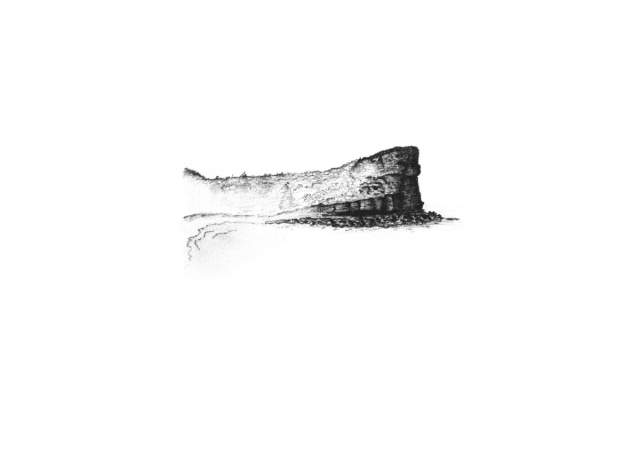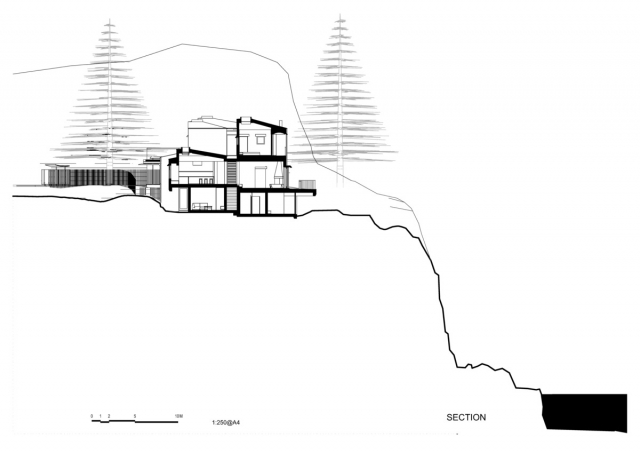Bangalley is a home inspired by its location, perched on a rising monolithic headland of sandstone and shale, jutting out into the Pacific Ocean just north of Sydney in the beachside suburb of Avalon.
The design by Casey Brown Architecture responds to this dramatic environment with a rustic rugged exterior and a raw but highly crafted interior.
The clients, a couple of journalist empty-nesters, instructed the architects ‘do the site justice’, ‘be part of nature’, and to ‘last 100 years’.
A rigorous design process delivered a topographical response – a series of steeped, staggered, and linked blocks or pavilions were carefully set amongst the boulders and twisted tea trees strewn over the headland.
Constrained by three massive Norfolk pines, flame zone bushland, a precipitous cliff edge, and arduous Council assessment, the site enjoys dramatic long-distance southern ocean and coastline views.
Beyond that, the site has immediate near-vertical views over the cliff edge to surfers and dolphins at Avalon Beach.
Highly visible from the popular public beach, the house replaces a rendered pink Tuscan style villa with a modest sized 350m2 house rooted in the hillside on three tectonic platforms enclosing a sun drenched and wind sheltered entry courtyard to the North, while overlooking the ocean and beach to the South and West.
The scale, form, and material pallet all seek to work with the terrain; cantilever terraces and balconies, exposed hoods and deep recessed openings ensure light and shade enhance the modulated facades.
The Casey Brown Architecture design created five attached pavilions linked by a double cross-over axis, directing the entry and vertical movement pattern of the house and aligning with the two principal aspects the house enjoys – the long distance southern coastal view and immediate western beach view.
Vertically, the plan is arranged into three functional areas.
The top floor contains the private master suite; the ground floor garden level comprises the kitchen, dining, living, and studies; and the lower cave-like sheltered guest rooms tucked into and between the rocks.
Access is via a battleaxe drive through a Corten and copper gatehouse into a sheltered garden court dominated by a giant Norfolk pine tree.
A vaulted entry canopy projects into the courtyard, appearing to float inside while supported externally by a natural sandstone column found on the site.
The house’s cliff-top aspect is completely concealed until the front door is opened revealing a double-height space aligned with the coastal headlands, stepping down into the main living room.
The tectonic expression of the Ken Murtagh engineered concrete skeleton inside and out provides large openings protected from sun and rain while reflecting the horizontal layering of the cliffs below.
The living room has fully retractable doors to two sides allowing a panoramic corner view and access to the terraces, made possible by a slender load-defying brass-clad post.
The buildings materiality is raw as the brief required, constructed both inside and outside from 500 x 40 bricks by S. Anselmo.
Smoky burnt grey/black bricks externally blend with the weathered sandstone surrounds. White bricks internally create an ever changing play of patterns and light as the sun moves around the building.
Stone floors throughout reinforce the earthy materiality of the spaces while vaulted timber ceilings rise to northern rooflights flooding south facing rooms with light and sun.
Fine brass railings mellow in the sea air and allow views through to the ocean and surrounding heathland.
All timber is FSC Certified Mailkaro including the double glazed Praarhammer fabricated Bal 40 windows and doors.
Central to the house is a finely crafted floating concrete stair connecting the three levels featuring a brass sculptured screen by Caroline Casey, who was also responsible for all the highly resolved and detailed joinery and furnishings throughout the house.
Here are two videos that are worth a look.
This one shows materiality and siting.
And here’s some drone footage from the beach to the house.
Project Details
Project size – 350 m2
Completion date – 2019
Building levels – 3
Project Team
Architecture
Casey Brown Architecture (Rob Brown – Design Director)
Founded in 1986, Casey Brown Architecture is an architectural studio based in Sydney with over 100 built projects across Australia. They are a design-led studio devoted to creating contemporary architecture through an organic understanding of building.
CBA design in direct response to climate, topography and lifestyle. This perspective creates a preference for lasting architecture of unpretentious functionalism, characterized by a richness of palette and detail throughout.
Casey Brown Architecture seeks to solve problems and transcend solutions to create memorable spaces.
Photography
Michael Nicholson
Michael is an established commercial photographer specialising in architectural and interiors photography. He has a degree in architecture from the University of Sydney, and a deep appreciation and understanding of the most engaging ways in which to represent architectural work photographically – making him the photographer-of-choice for a number of Australia’s leading architects.
Photo Gallery
Click on a thumbnail image to enlarge.
Design © 2020 Casey Brown Architecture. All Rights Reserved.| Images © 2020 Michael Nicholson and Charlie Baker. All Rights Reserved.
Get the Builtworks Letter
In every edition of the Builtworks Letter, you’ll get the behind-the-scenes backstory as to how buildings are designed, built, and brought to life.
You’ll hear compelling stories, learn surprising ideas, meet engaging characters, and discover unique voices.

